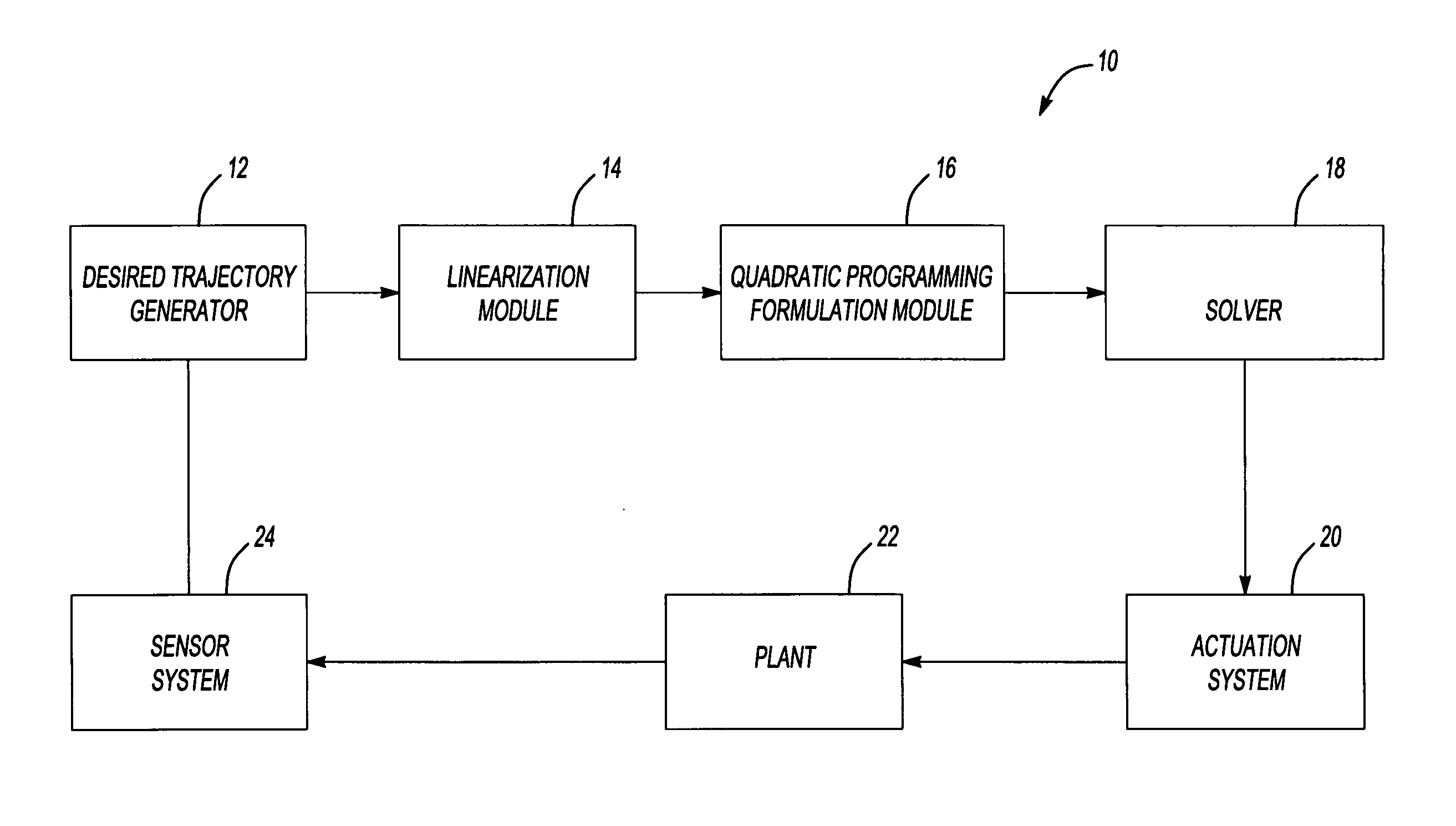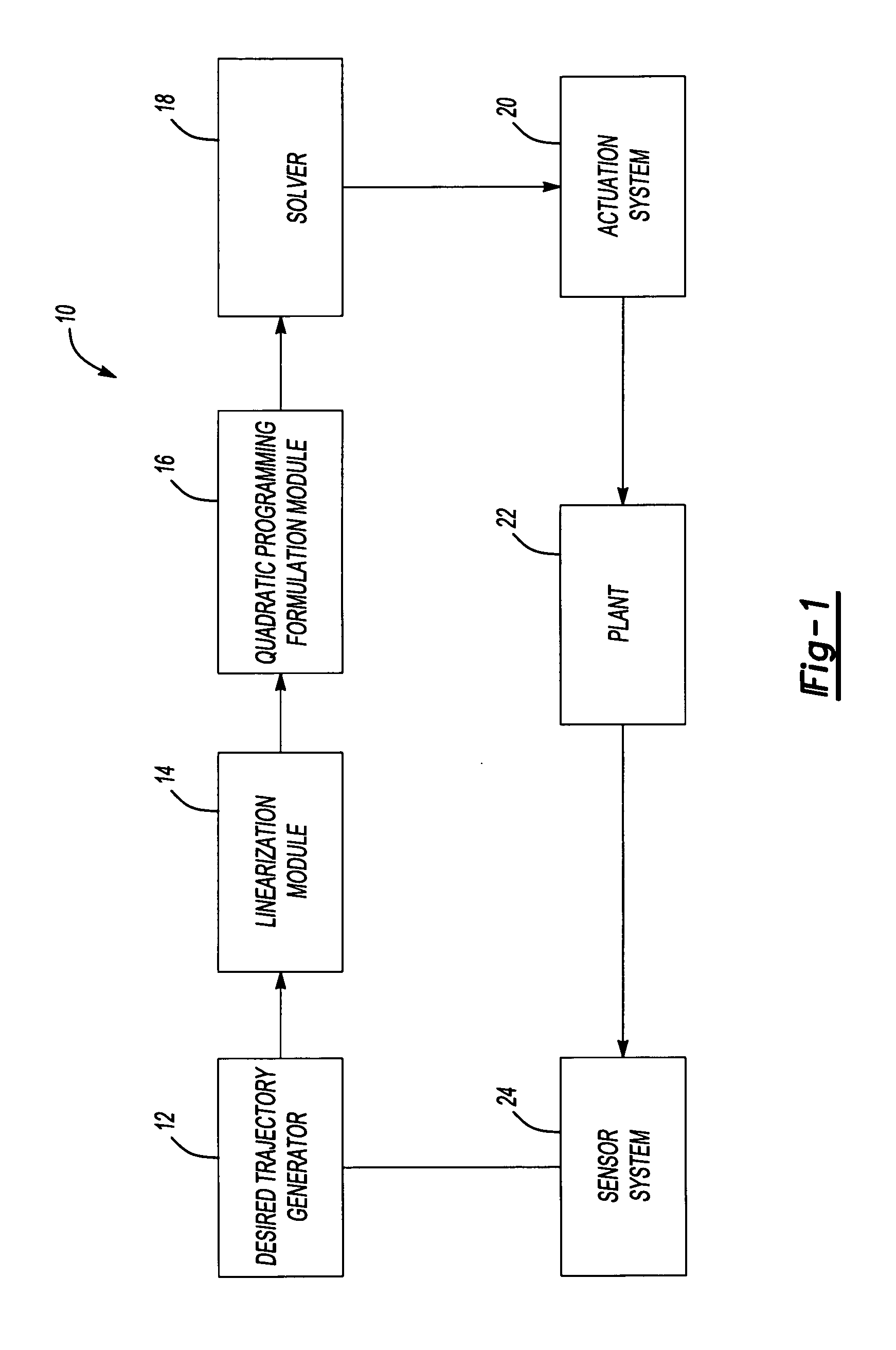System and method for solving equality-constrained quadratic program while honoring degenerate constraints
a quadratic program and equality-constrained technology, applied in adaptive control, process and machine control, instruments, etc., can solve problems such as constraints to be violated, and achieve the effect of increasing the worst-case complexity of computation and extra accuracy
- Summary
- Abstract
- Description
- Claims
- Application Information
AI Technical Summary
Benefits of technology
Problems solved by technology
Method used
Image
Examples
case 1
[0037] xk satisfies Exk=be
[0038] Since xk satisfies the right hand side of the equalities exactly (if not, alternative described later), the EQP in s can be re-written as min12sTHs+sT(Hxk+f)Es=0(2)
[0039] While the EQP in either form can be solved exactly in the absence of degeneracy, the presence of numerical degeneracy (even though there may not be degeneracy in infinite precision) causes inaccurate solutions. In particular, with the usual way of reducing the KKT equations, determining lambda first, and plugging the solution back in to compute the (change in) controls, the equality constraints can be violated, causing very undesirable constraint violations further in the QP iterations.
[0040] This document proposes an alternate way of solving the EQP, based on a ‘change of coordinates’. This ‘change of co-ordinates’ to take advantage of the reduced nullspace formulation is more standard in the nonlinear programming literature. It involves more linear algebra but is guarant...
case 2
[0059] Alternate xk does not satisfy Exk=be
[0060] If the previous xk does not satisfy the right hand side of the equalities exactly, a separate approach needs to be adopted. A novelty of this invention is that we can solve this problem as well without computing any extra factorization.
[0061] Revisiting the previous formulation (1), we can express the original EQP as min12(xp+s)TH(xp+s)+fT(xp+s)s. t. E(xp+s)=be(10)
[0062] where xp is any solution (p stands for “particular” solution) satisfying the linear system of equations Ex=be, and not necessarily the preceding iterate. Once xp is determined, the method described earlier can be applied easily. The novelty in this invention is that it devises a way of using the factorization we would have computed anyway to support our subsequent calculations to compute this particular solution.
[0063] Since E is underdetermined, we can compute a particular solution to the system
Exp=be (11)
[0064] by using the “minimum-norm approach...
PUM
 Login to View More
Login to View More Abstract
Description
Claims
Application Information
 Login to View More
Login to View More - R&D
- Intellectual Property
- Life Sciences
- Materials
- Tech Scout
- Unparalleled Data Quality
- Higher Quality Content
- 60% Fewer Hallucinations
Browse by: Latest US Patents, China's latest patents, Technical Efficacy Thesaurus, Application Domain, Technology Topic, Popular Technical Reports.
© 2025 PatSnap. All rights reserved.Legal|Privacy policy|Modern Slavery Act Transparency Statement|Sitemap|About US| Contact US: help@patsnap.com



